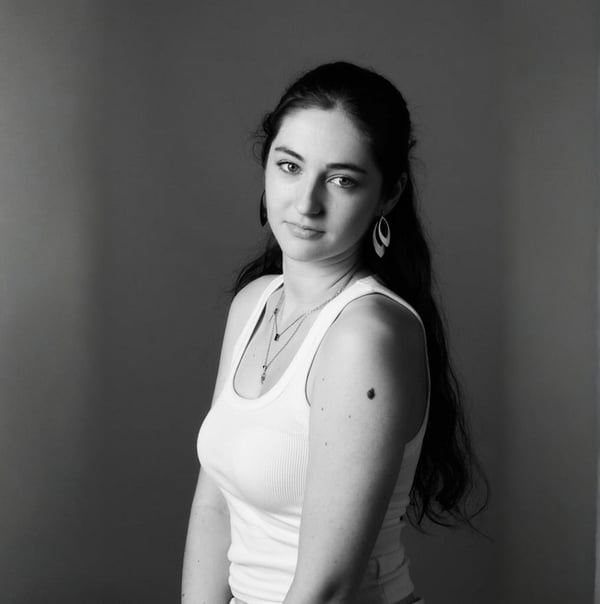Understanding the Concept of Futuristic Elegance
Table of Contents
- What Is Futuristic Elegance?
- The Roots of Futuristic Style
- Key Elements of Futuristic Elegance
- How Futuristic Elegance Shapes Modern Fashion
- Futuristic Elegance Beyond Fashion
- How Modelia Helps You Visualize Futuristic Fashion
- Futuristic Elegance vs. Traditional Elegance
- The Future Is Elegant
- FAQs About What is Futuristic Elegance
I am sure that you have ever looked at a fashion collection or interior space and thought it looked straight out of the future. It could be caused by the materials, the silhouette or the colors but, you’ve probably encountered futuristic elegance. But what is futuristic elegance, really? It’s more than just metallic fabrics or sharp silhouettes, it’s a design philosophy that blends innovation, simplicity and luxury into a single visual language.
In both futuristic style and modern elegance fashion, the goal is to imagine what tomorrow might look like, while keeping a sense of timeless refinement. It’s a balance between technology and taste.
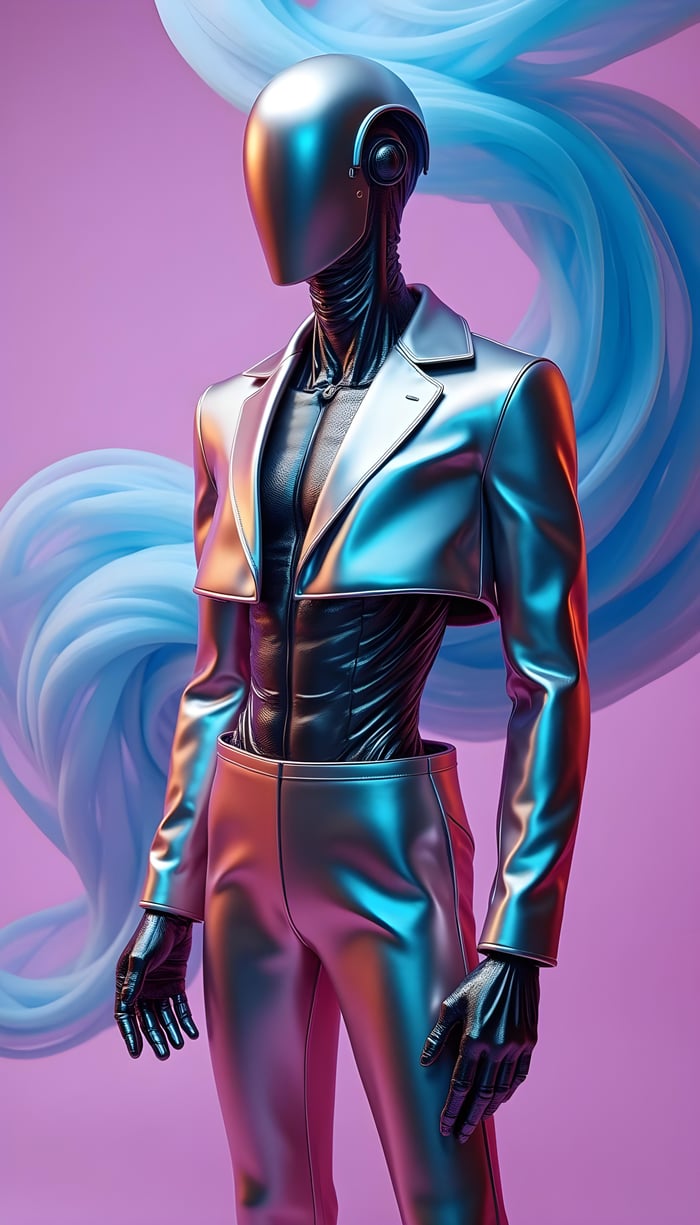
What Is Futuristic Elegance?
Futuristic elegance is an aesthetic that mixes tech materials and forms with the same sophistication as classic design. In this esthetic you can see sculptural silhouettes, smooth metallic surfaces and minimalist color palettes paired with refined tailoring or architectural structure. This might look like a dress made from silver-coated recycled fabric that fits perfectly to the body or a clean, minimalist space with chrome accents, ambient lighting and smart materials that adapt to the environment.
Futuristic elegance represents that way the meeting point between creativity and innovation. It's where modern minimalism merges with the imagination of the future.
The Roots of Futuristic Style
Before going into this modern elegant fashion, it's helpful to understand the origins of futurist style. Its aesthetic dates back to early visions of the future, from mid-20th-century science fiction films to the space-age designs of the 1960s. It is the representation of how people in that time used to imagine people from 21st century.
Designers such as André Courrèges and Pierre Cardin pioneered futurist fashion by experimenting with geometry, plastics and metallic fabrics. They envisioned a world where clothing reflected space travel, innovation and freedom from tradition.
Over time, this evolved into a more refined vision: futuristic design that not only looks advanced but feels timeless. It's less about being strident or experimental, and more about being intentional, balanced, and fluid.
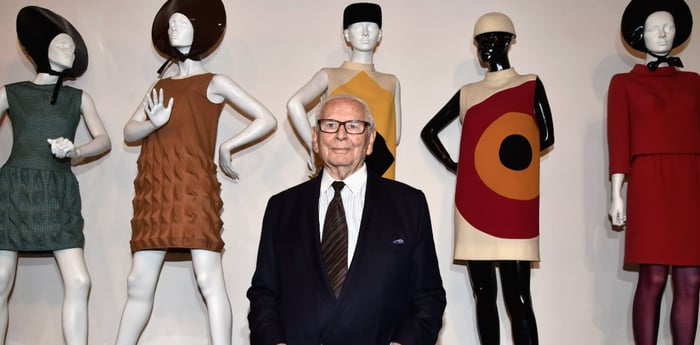
Key Elements of Futuristic Elegance
1. Minimalism with Purpose
Clean lines and uncluttered silhouettes define this look. There’s no excess, only elements that serve a purpose.
2. Innovative Materials
From 3D-printed fabrics to metallic finishes and smart textiles, futuristic design embraces innovation. The materials themselves often become part of the storytelling.
3. Neutral and Metallic Palettes
Silver, white, black, and muted tones dominate the color scheme. These shades reflect both the precision of technology and the serenity of elegance.
4. Sculptural Silhouettes
Shapes are fluid yet structured. They highlight the body’s natural form while introducing unexpected architectural twists.
5. Subtle Luxury
Unlike traditional luxury, which often screams opulence, modern elegance fashion whispers it. Details matter, stitching, texture, and form create sophistication without excess.
How Futuristic Elegance Shapes Modern Fashion
From Runway to Real Life
Fashion houses are reinterpreting futuristic elegance in every new collection. Designers like Iris van Herpen, Balmain and Mugler have embraced futuristic style, using technology to enhance creativity.
Iris Van Herpen, for example, uses 3D printing to sculpt garments that seem alive, being the movement one of the key identity elements of the brand. These designs embody modern elegance fashion because they are delicate, bold and futuristic at the same time.
Even in streetwear, futuristic design is emerging through metallic accents, asymmetrical cuts and performance materials that merge function with style.
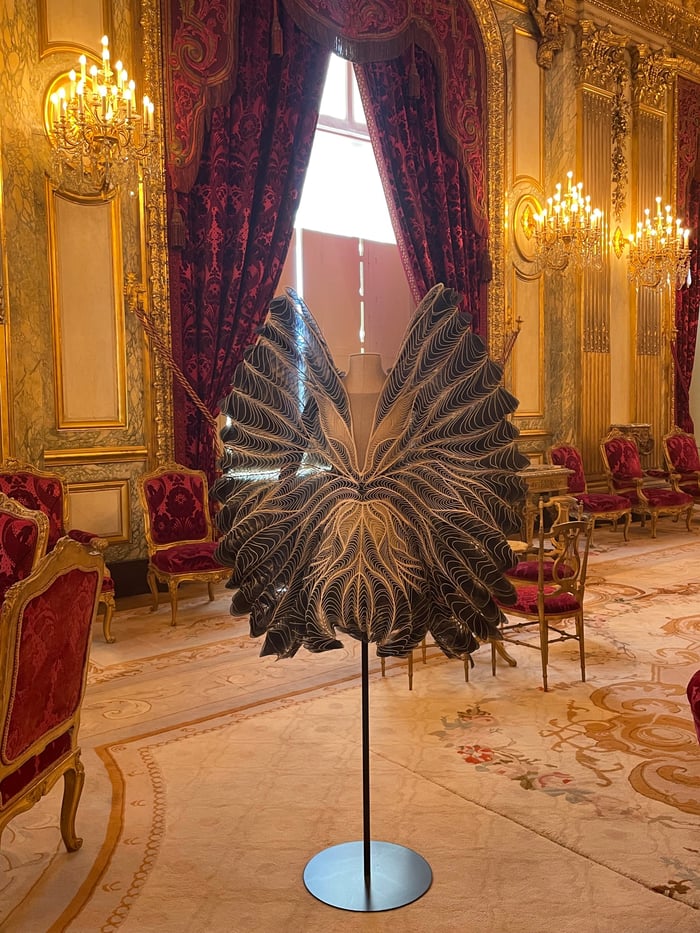
Digital Fashion and Virtual Runways
As AI and digital design tools evolve, futuristic elegance is also entering the virtual space. Digital garments, AI-generated fashion models and 3D showrooms are now redefining what elegance looks like in a digital-first world.
In virtual spaces, fashion takes on a new life. Digital garments float effortlessly, adapting to light and movement in ways that would be impossible in the real world. Runways have become immersive experiences, where holograms, augmented reality, and AI styling redefine what it means to be elegant. Brands can debut collections in metaverse platforms, interact directly with audiences and experiment with futuristic design concepts that push aesthetics beyond the limits of physics.
Platforms like Modelia make it possible to visualize futuristic design concepts instantly, showing AI models wearing sleek, forward-thinking outfits that blend style with innovation.
The Rise of Digital Garments
Digital garments aren’t just creative experiments, they’re a revolution in how the fashion industry produces and presents. By eliminating physical sampling, brands can cut costs and reduce waste while still exploring bold new aesthetics. Designers can simulate materials like liquid metal, iridescent silk, or translucent polymers that shimmer under digital light.
This shift makes futuristic elegance more accessible, turning imagination into a tangible digital experience. Every fold, reflection, and silhouette can be perfected before production even begins, creating a bridge between artistry and sustainability.
AI Fashion Models and Smart Visualization
Here’s where AI platforms like Modelia redefine what’s possible. Using AI fashion models, brands can visualize futuristic design instantly, seeing how metallic textures, geometric silhouettes or minimalist clothes would look in motion, on diverse body types or within different digital environments and backgrounds.
This ability transforms the creative process and, instead of waiting weeks for photoshoots, fashion teams can create visuals in minutes. AI tools let designers adjust color palettes, lighting and garment structures in real time, crafting content that aligns with the essence of modern elegance fashion, clean, elevated and forward-thinking.
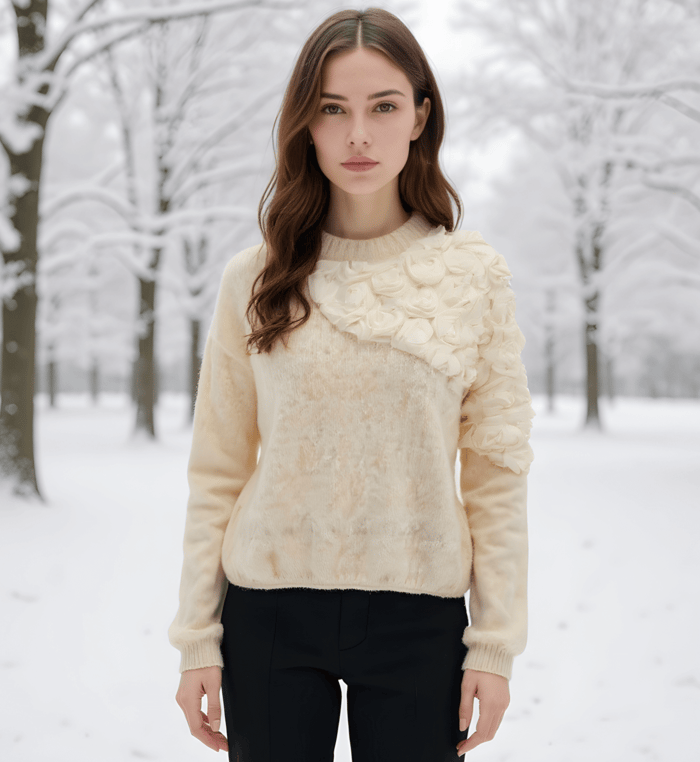
The Power of Virtual Runways
Virtual runways have become the stage where futuristic style meets storytelling. They allow brands to move beyond traditional catwalks, building fully digital environments where garments can interact with music, architecture, and motion. Think of a collection presented in a floating cityscape, or a holographic runway surrounded by light installations, this is futuristic elegance in motion.
Not only do these experiences captivate audiences, but they also democratize access. Anyone, anywhere, can attend a digital show. This inclusivity amplifies a brand’s reach while keeping sustainability at its core.
Modelia’s Role in This New Era
At Modelia, we believe that elegance doesn’t belong only to the physical world, it thrives in pixels too. Our AI tools empower fashion brands to create, test and refine futuristic design ideas through hyper-realistic visuals. With Modelia, designers can:
Generate AI fashion models wearing avant-garde outfits in seconds.
Produce high-quality digital lookbooks without photography.
Experiment with new shapes, textures, and materials that define futuristic style.
Build campaigns that express modern elegance fashion through technology.
By merging creativity with computational power, Modelia helps turn visions of futuristic elegance into captivating visual stories that inspire audiences and move fashion forward.
In this new landscape, innovation is the new couture, and pixels are the new fabric. The runway of tomorrow isn’t a place, it’s an experience.
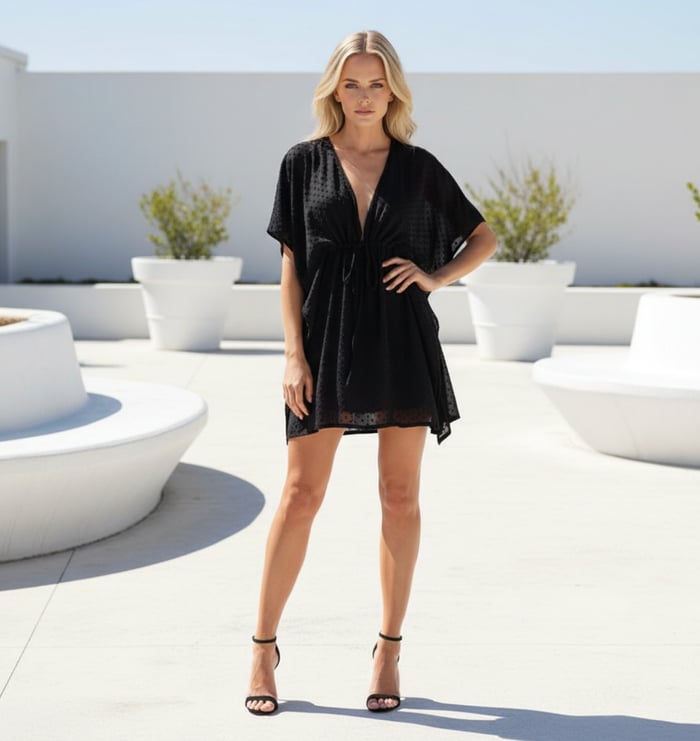
Futuristic Elegance Beyond Fashion
While it shines in fashion, futuristic elegance extends into architecture, product design, and lifestyle aesthetics. You’ll find it in minimalist homes with smart lighting systems, in sleek electric vehicles, and in high-tech product packaging that feels like art.
This cross-disciplinary influence shows how deeply futuristic design resonates with modern values, efficiency, sustainability, and self-expression.
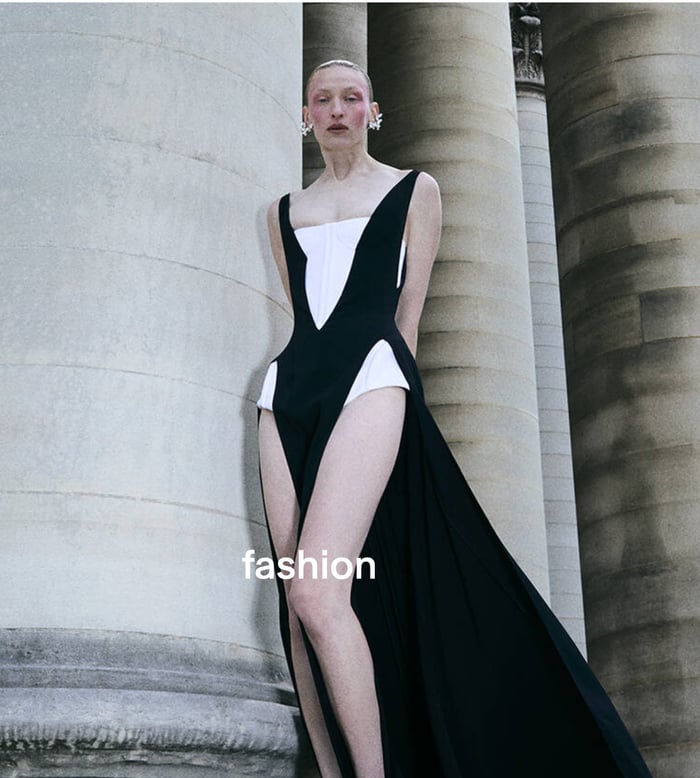
How Modelia Helps You Visualize Futuristic Fashion
At Modelia, we help designers, brands, and creatives bring futuristic elegance to life through AI-generated visuals. With tools that let you create digital models, recolor outfits, or design garments inspired by futuristic style, Modelia gives you the power to test ideas instantly.
Whether you’re experimenting with metallic tones, avant-garde shapes or modern elegance fashion concepts, our AI tools make it easier to visualize your vision. You can preview your designs on AI models, test different environments, or simulate full campaigns that embody futuristic design aesthetics.

Futuristic Elegance vs. Traditional Elegance
Feature | Traditional Elegance | Futuristic Elegance |
|---|---|---|
Style Approach | Classic, ornate | Minimal, innovative |
Materials | Silk, lace, wool | Smart textiles, metallics, 3D prints |
Color Palette | Warm neutrals | Silvers, whites, blacks, cool tones |
Design Focus | Handcrafted detail | Technological precision |
Inspiration | Heritage and culture | Space, architecture, AI |
Silhouette | Tailored, soft | Sculptural, experimental |
This contrast highlights how futuristic style evolves beyond traditional definitions of luxury, embracing progress while maintaining elegance.
The Future Is Elegant
So, what is futuristic elegance really? It’s a mindset. It’s about designing for the future while honoring the beauty of simplicity. Whether in fashion, architecture, or digital design, this aesthetic merges technology with human artistry.
As modern elegance fashion evolves, so will our definition of sophistication. It’s not about replacing tradition, but about reimagining it for a new era, one where sustainability, innovation, and creativity coexist.
Platforms like Modelia are helping bring this vision to life, empowering designers to create visuals that blend futuristic design with timeless grace.
Visit Modelia and keep learning about fashion and AI
FAQs About What is Futuristic Elegance
1. What defines futuristic elegance in fashion?
It’s a blend of innovation, simplicity, and luxury, using technology, materials, and design to create garments that feel modern yet timeless.
2. Is futuristic style only about metallic looks?
Not at all. While metallics are common, futuristic style is more about shape, texture, and the balance of minimalism with innovation.
3. How can designers achieve modern elegance fashion?
By focusing on clean forms, quality materials, and experimental structures that highlight the human form.
4. What makes futuristic design sustainable?
Using smart textiles, recycled materials, and AI-assisted production reduces waste and increases efficiency.
5. How does Modelia fit into the futuristic elegance trend?
Modelia enables designers to visualize futuristic design concepts through AI-generated models, digital outfits, and instant rendering, helping bridge creativity and technology.
How would you rate this article:
Related Articles
- The Best AI Fashion Design Software to Innovate Your Brand
- Best AI Tools for Apparel and Fashion Brands in 2025
- Content Marketing for Ecommerce: How to Attract and Retain Customers
- Design Eye-Catching Magazine Covers with AI
- Introducing AI fashion stylist
- How to Style Cool Baggy Outfits with Confidence
- Ultimate Guide to Styling Streetwear for Women: From Casual to Chic
- Virtual Try-On Revolution: Experience Fashion, Makeup & More
- The Best Sustainable Fashion Brands Changing the Industry
- 7 Fashion Brand Marketing Strategies to Succeed in a Competitive Market
